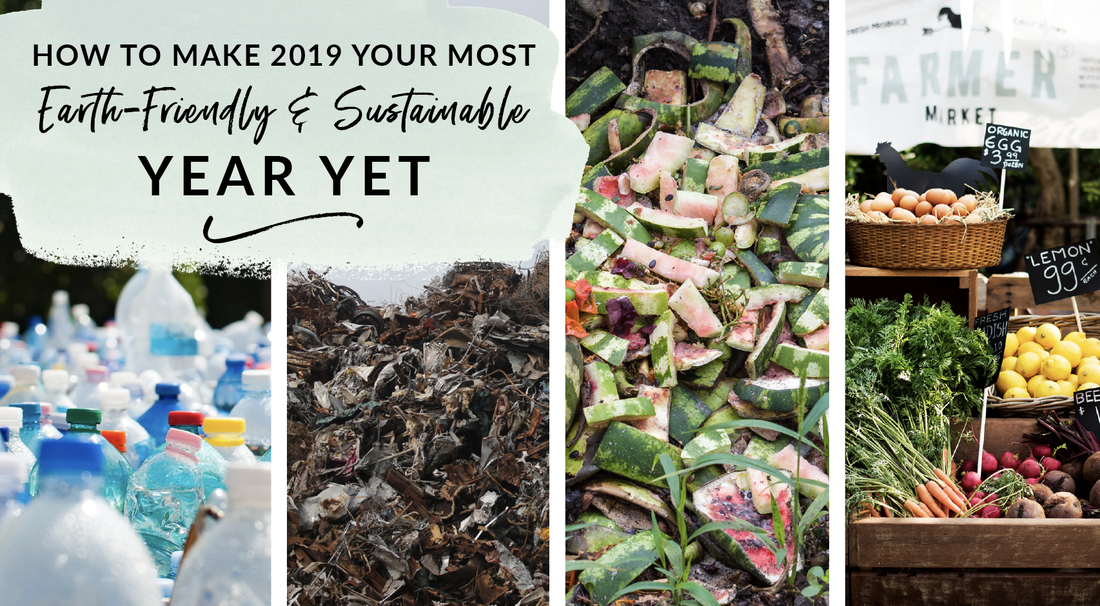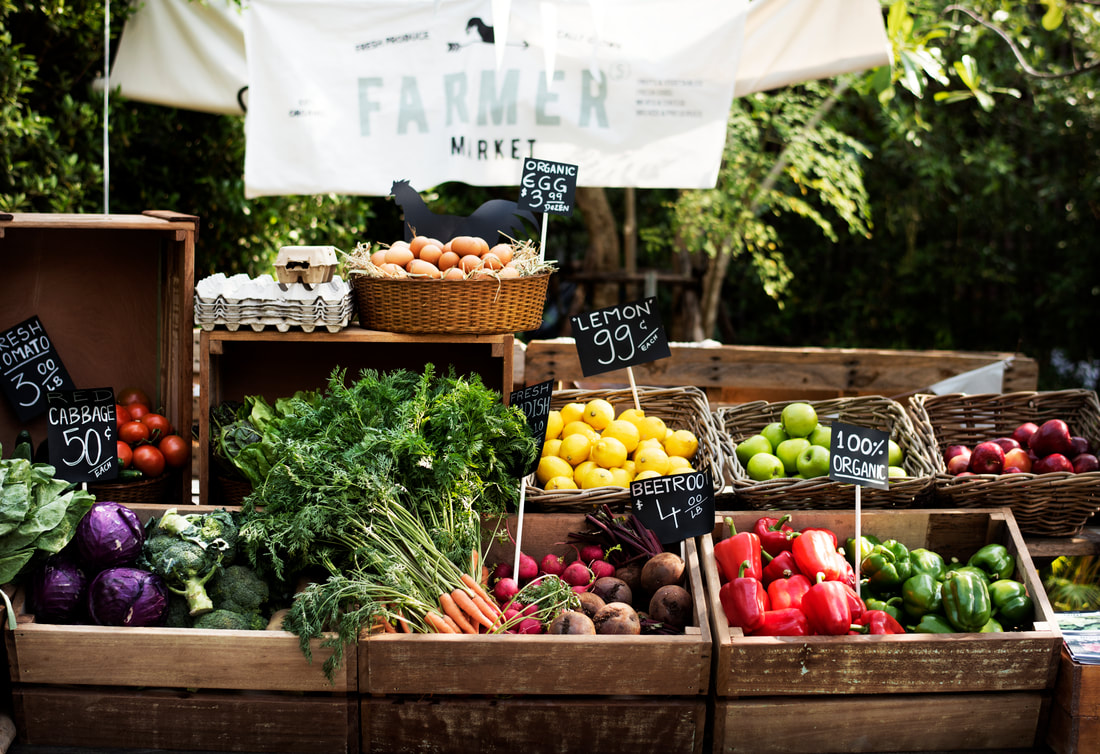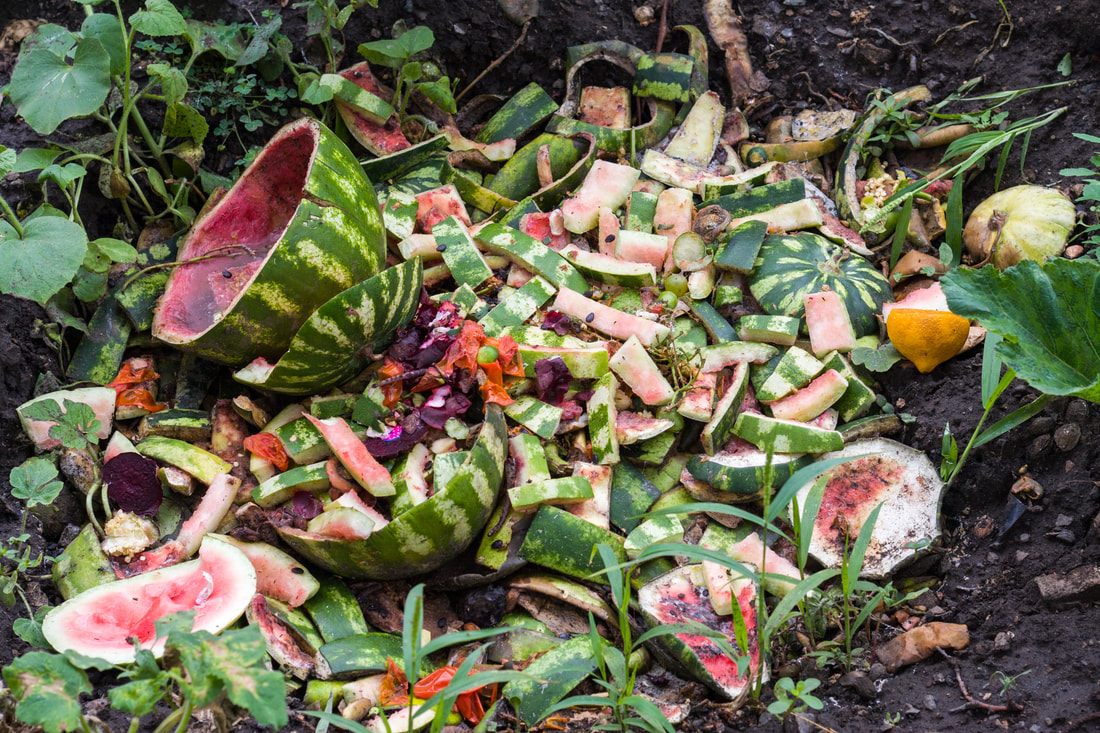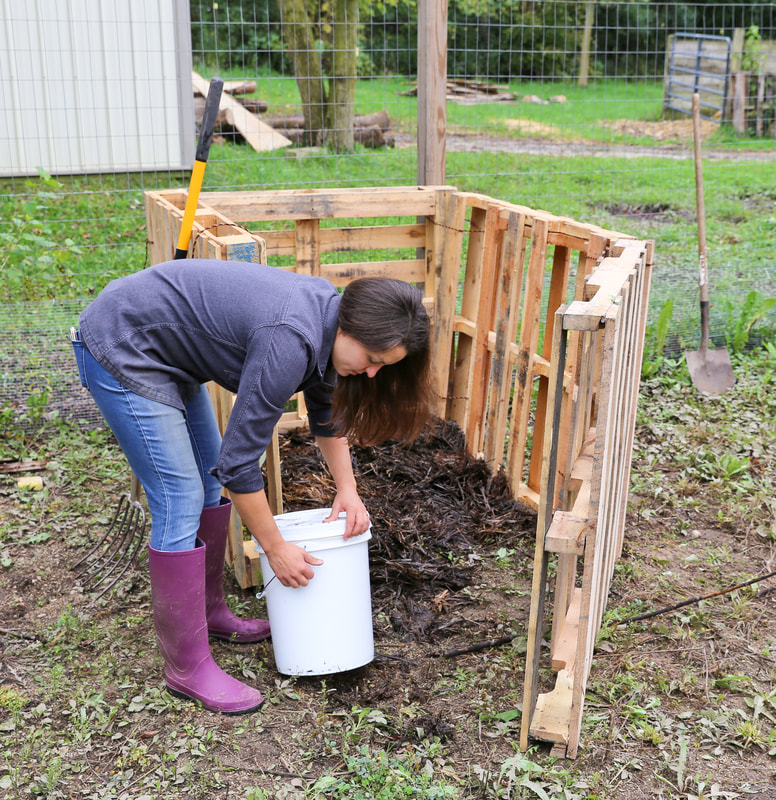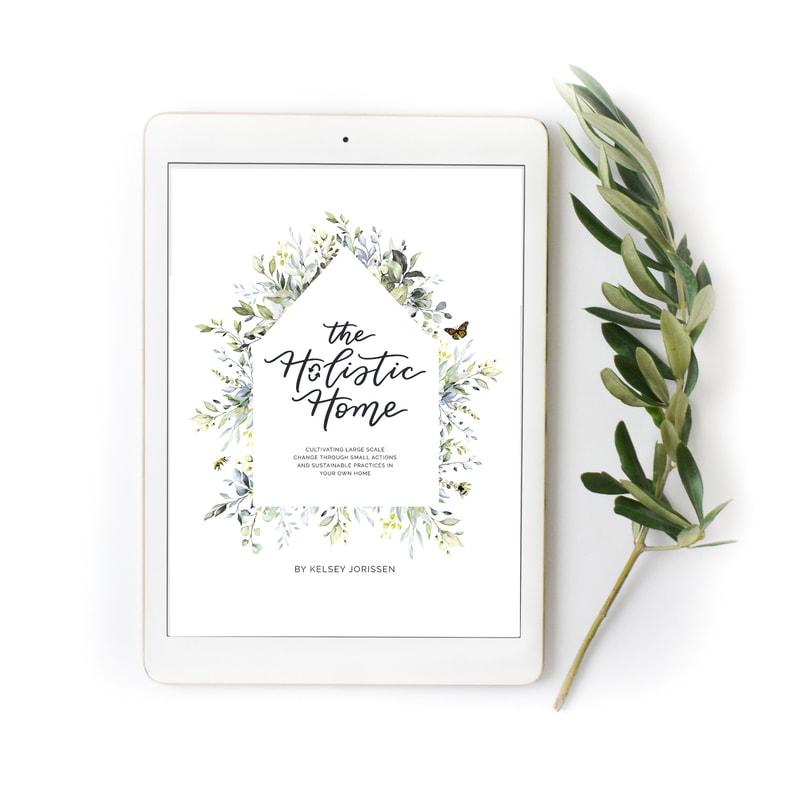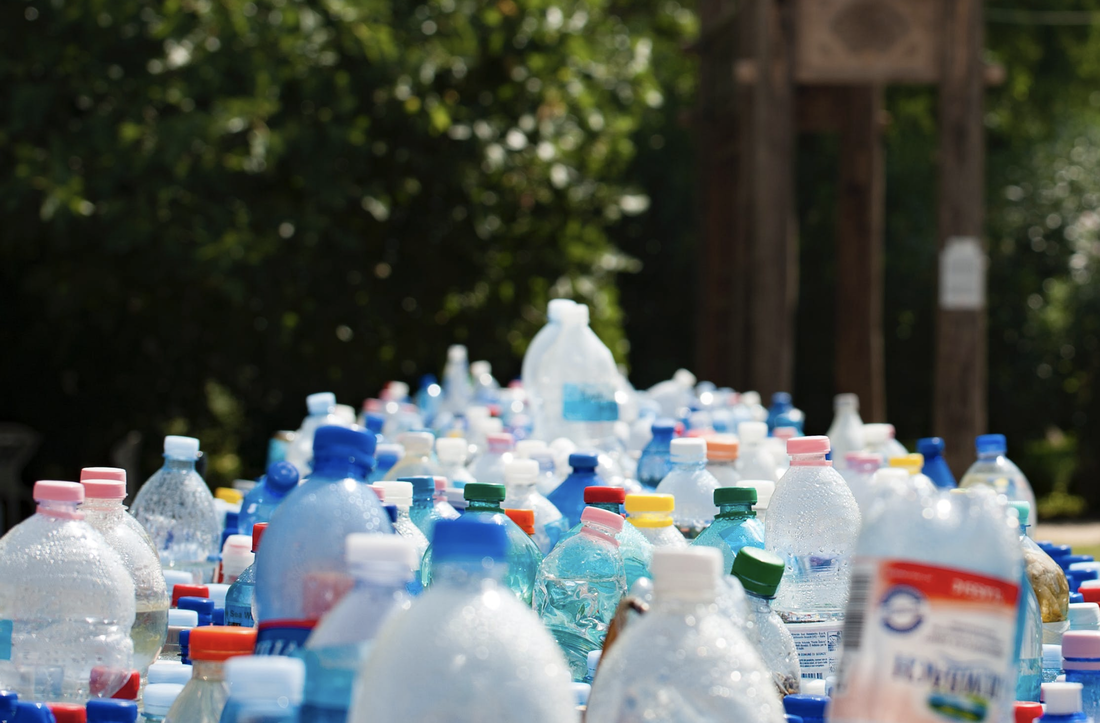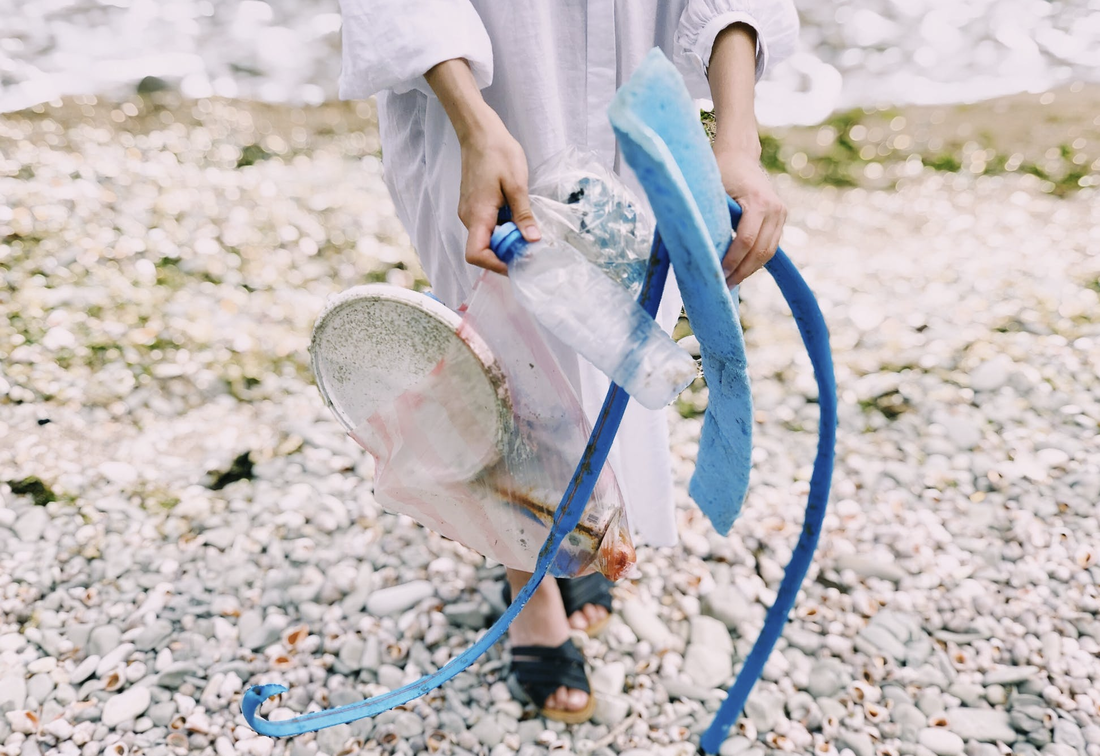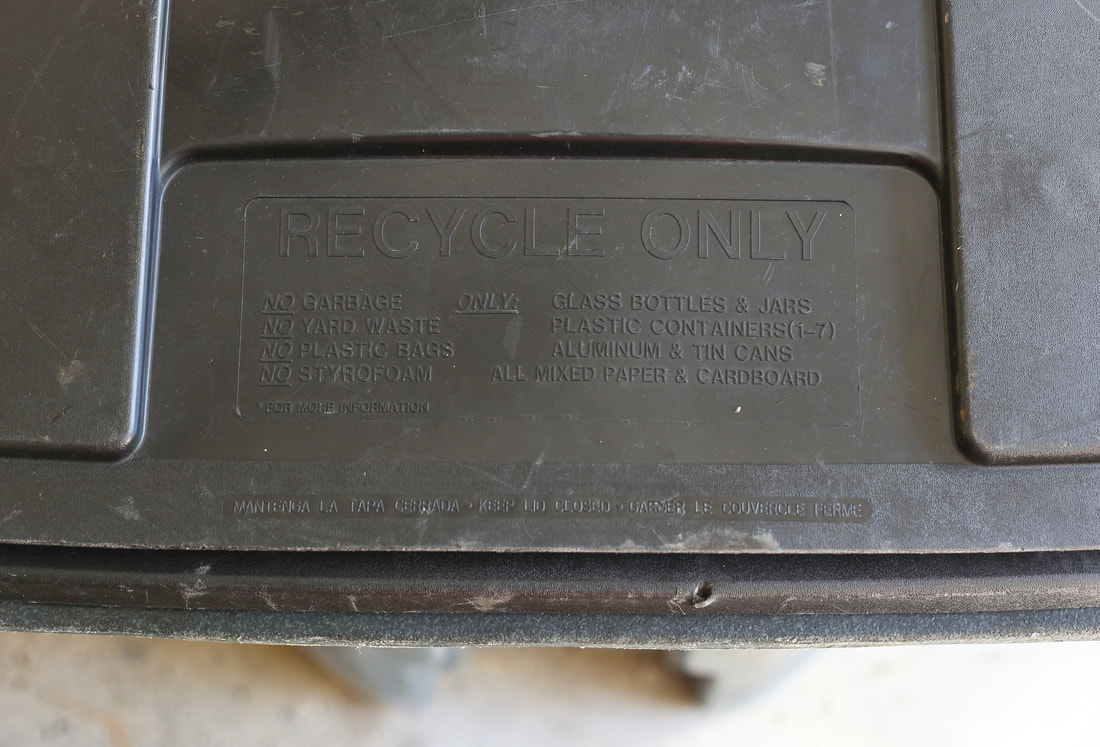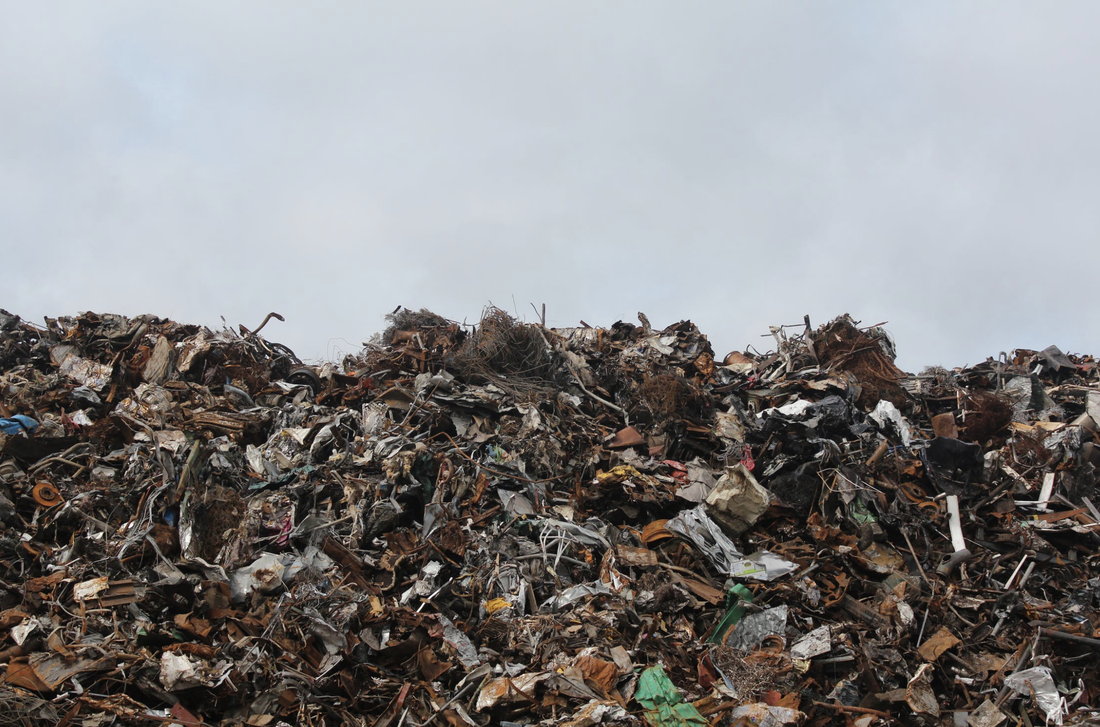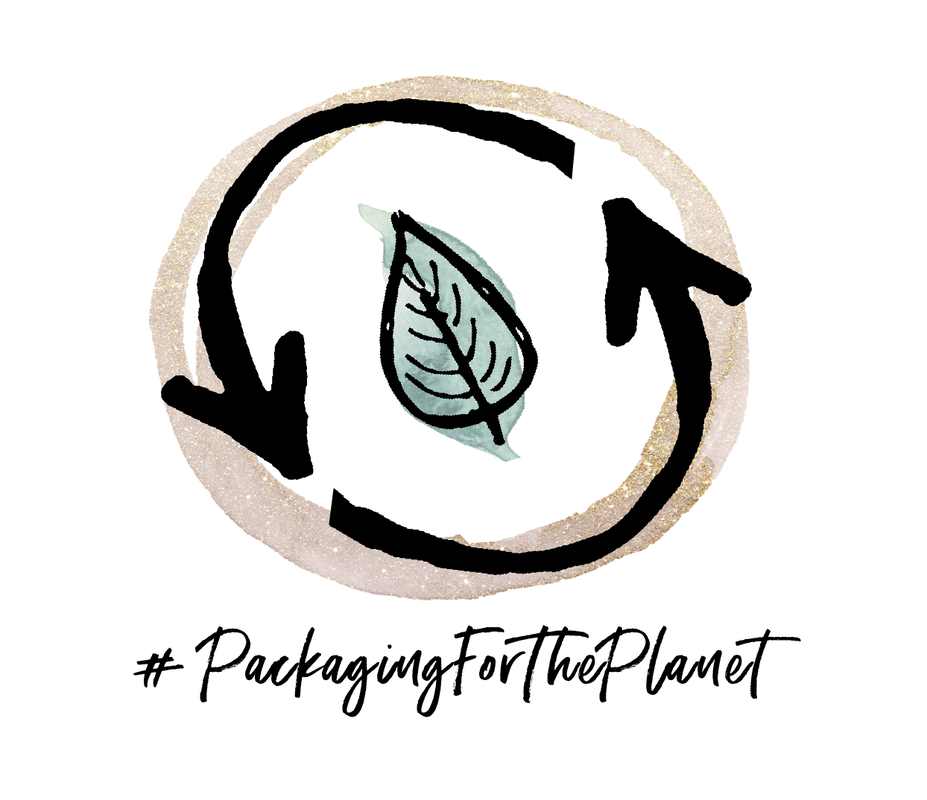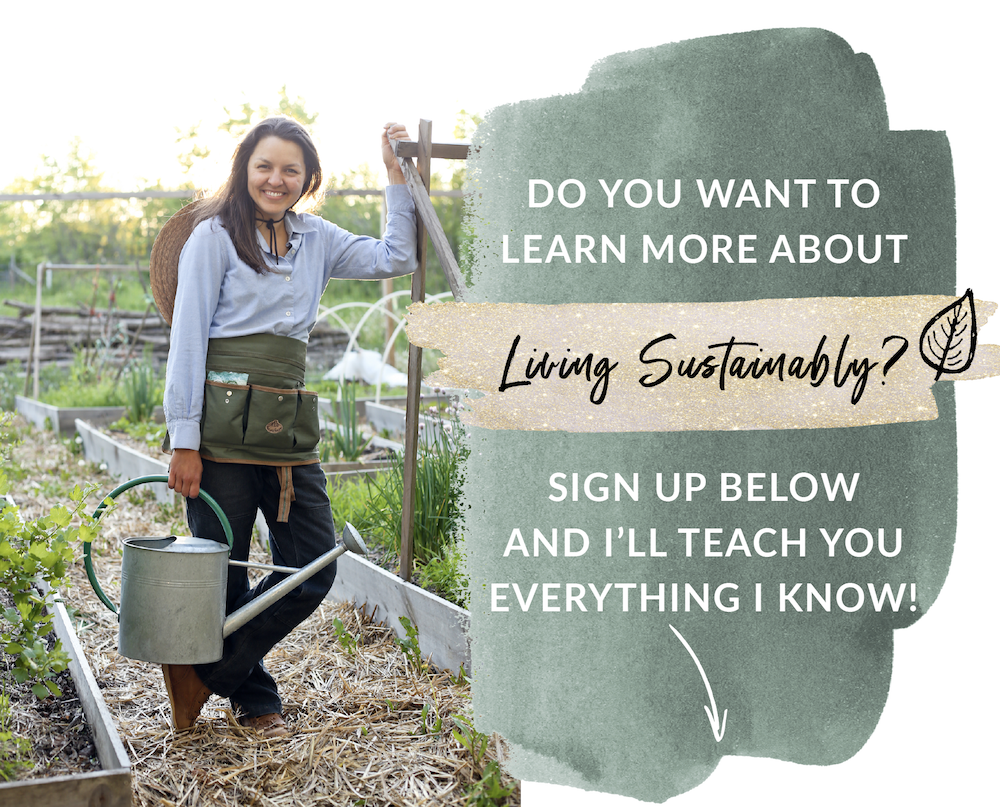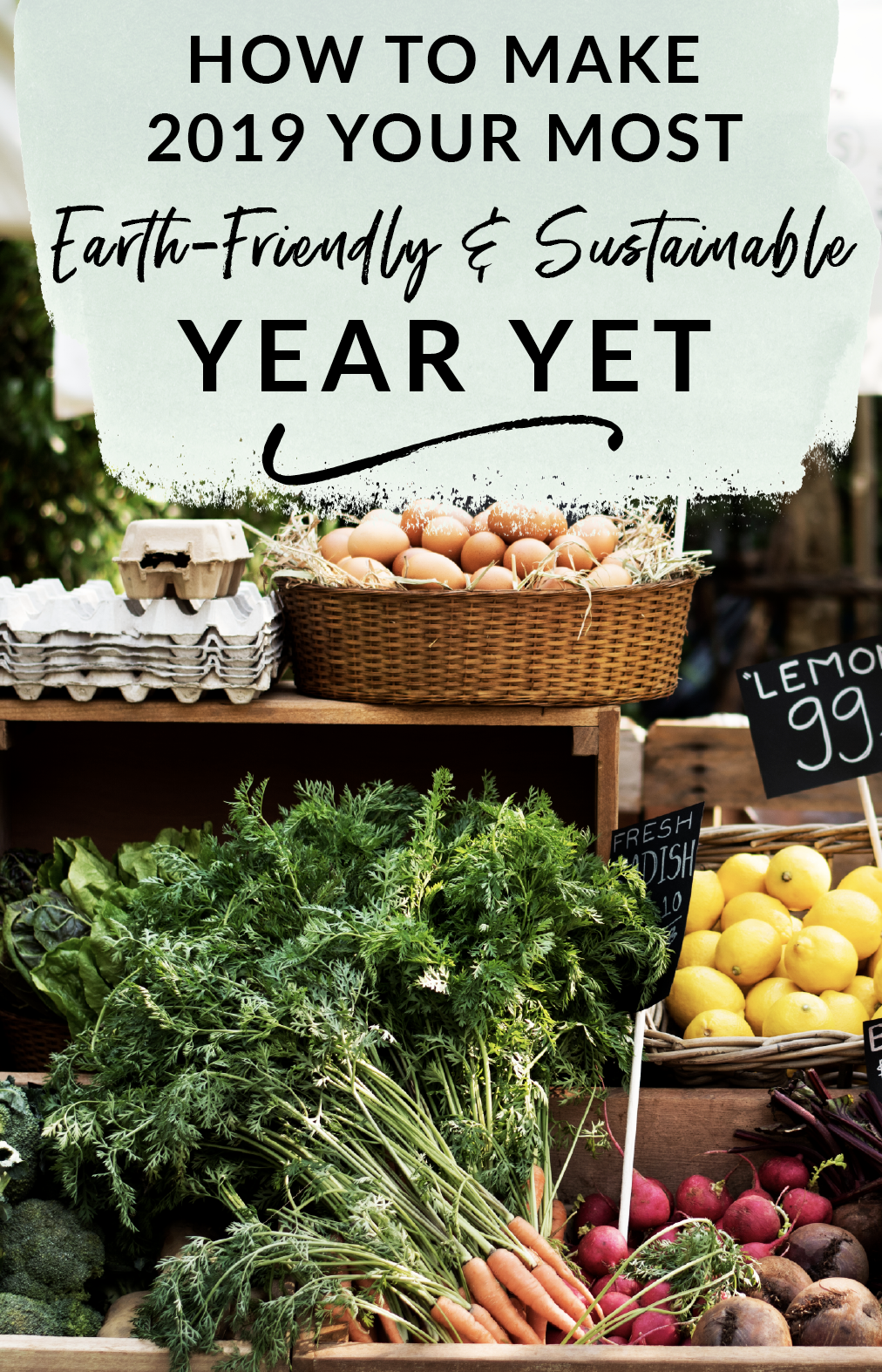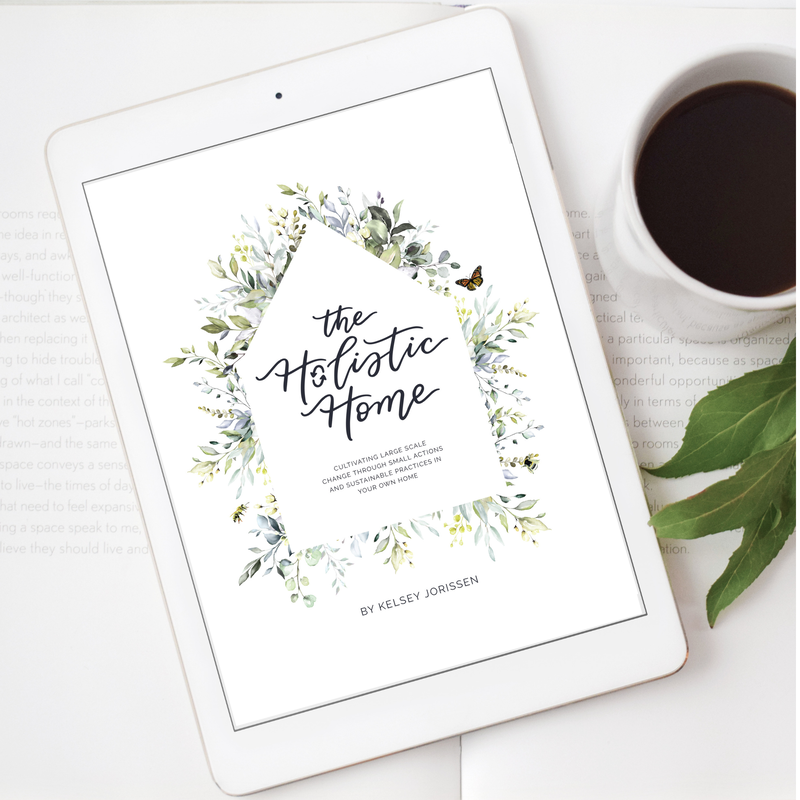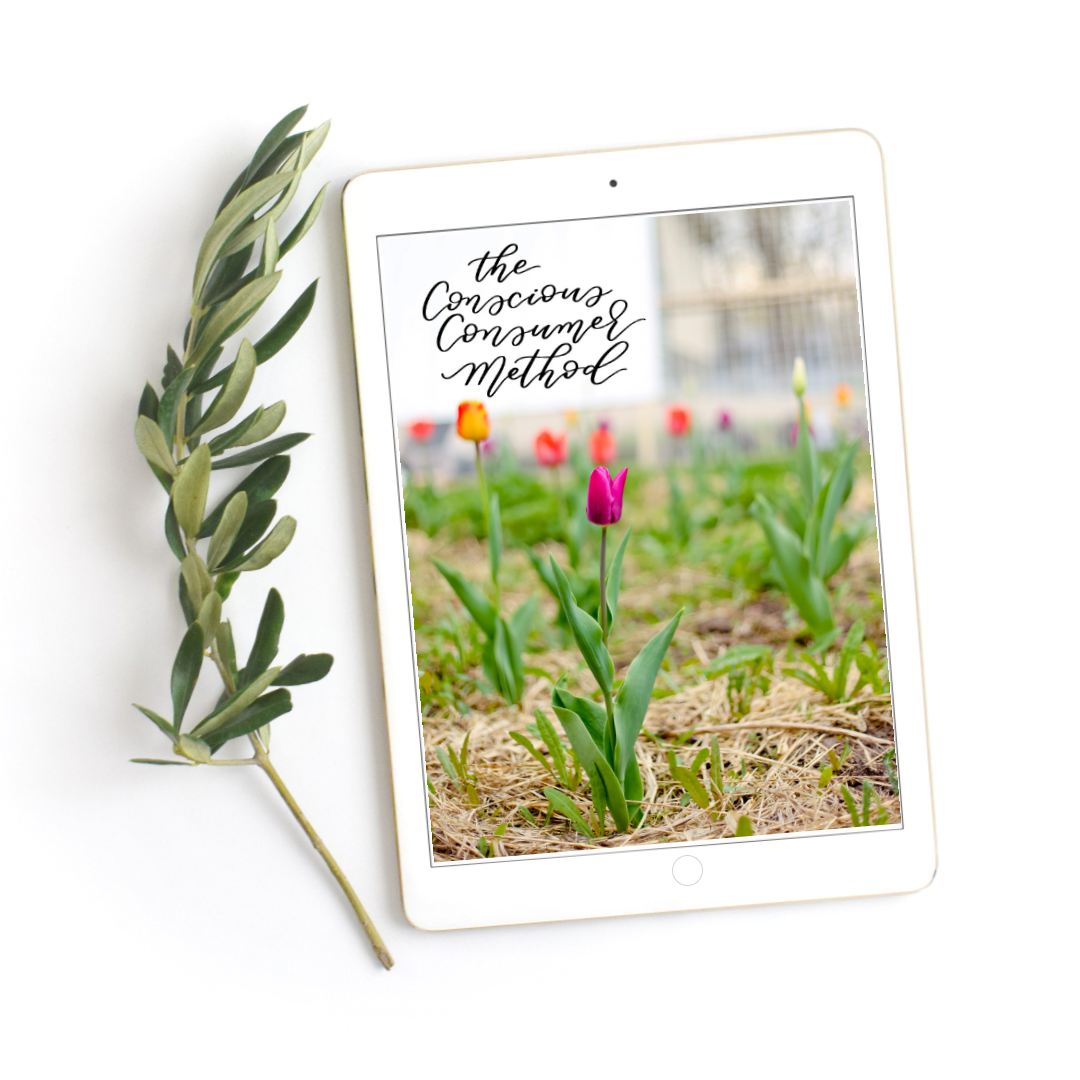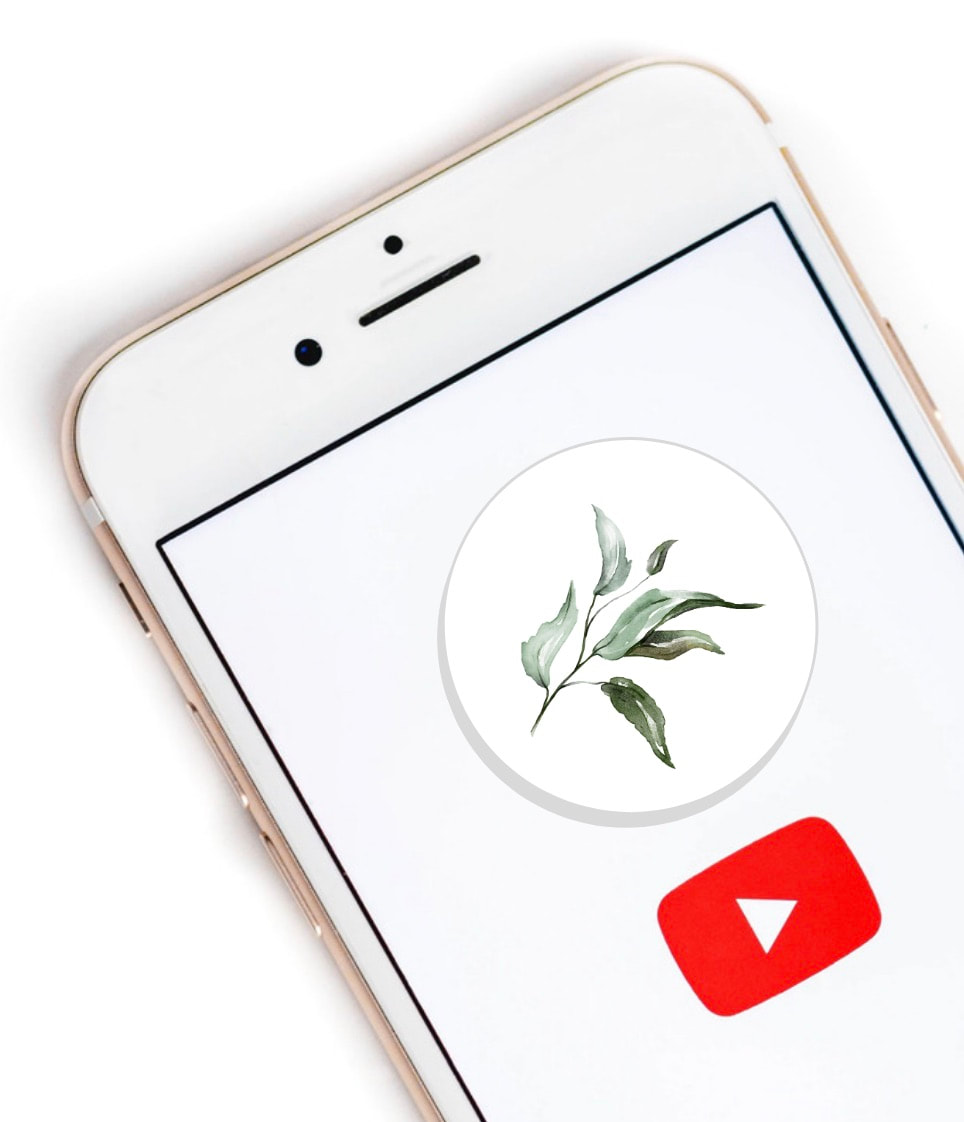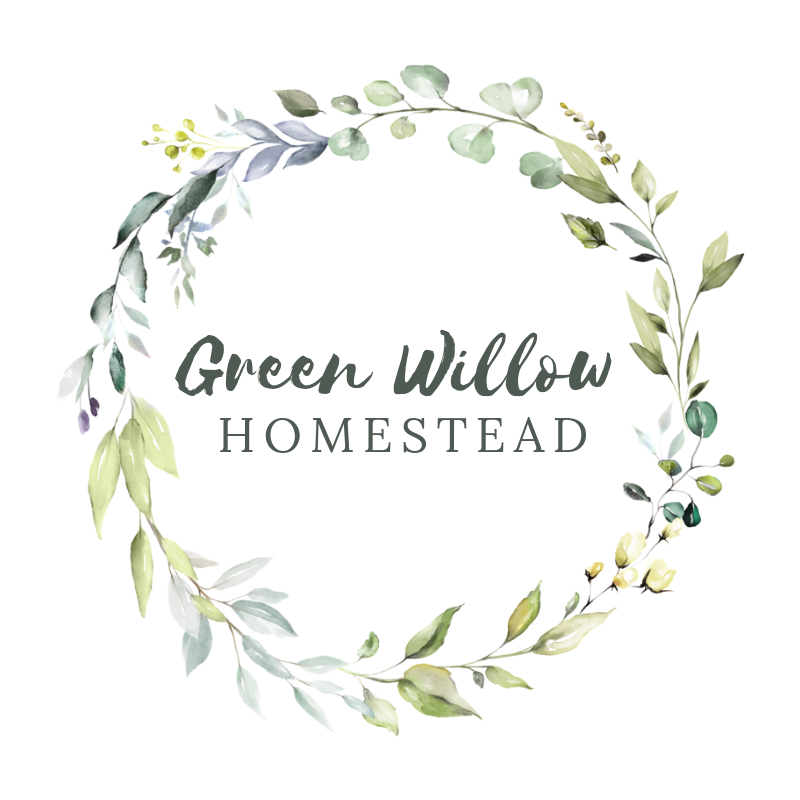|
With the UN climate report slating our point-of-no-return for global warming at 2040 and the US climate report coming in at 2030, we’ve got to work to make 2019 our most earth-friendly, sustainable year yet.
Unfortunately, both of these reports have led to some proposed solutions that are downright scary, like spraying sulfur dioxide into the atmosphere to dampen the heating capacity of the sun. The scientists behind this ludicrous idea call it geoengineering. The potential environmental fallout from this solution is so catastrophic that, to be frank, our planet being wiped out by climate change is a much more merciful end. Why is it we don’t see more calls to action for the general public? Our climate change issues are driven by industry led by consumption. Consumers run the show. The sooner we can get to work on ourselves and our own habits, the sooner we can see mass shifts for the health of our planet. So before we dive in, serious gold stars for you because you are taking the time to understand how you can be a part of the solution (and a positive not-scary solution at that). Before we continue, be sure to give yourself a mental (or physical!) pat on the back for caring and wanting to do better. Earth lovers rock! Alright, here are the top six ways you can make 2019 your most earth-friendly and sustainable year yet. 1. Eat Local To Reduce Your Carbon Footprint
The first thing you can do to cut down on yours and your family’s carbon footprint is to shop as locally as possible for your food. The best and easiest way to accomplish this is to go to your local farmers market.
Not only will you be benefiting your local community, but going to the farmers market is a wonderful experience in and of itself. At markets, they will often have food trucks, live music, and fresh coffee. Walking through the early morning air and perusing all the different stalls is akin to relaxed window shopping. The people manning the booths are all passionate and ready to answer your questions, from how they make their soap to what they feed their pigs in the winter. That’s not an experience you get while shopping at Walmart. The farmers that show up at your local market are your neighbors, and by purchasing from them just once a month, you are supporting local business and keeping capital circulating within your community. I recommend going earlier in the day because the selection of produce and products will be at its peak, ensuring your shopping experience has the utmost variety. Make a list, but don’t shy away from trying a few new things. Have cash on hand, but know that many farmers markets now accept credit cards. Even during the winter months, many markets will combine with neighboring markets to keep up business. So what are you waiting for? Grab your reusable bags and get on Local Harvest to search your area for one! 2. Start Composting Your Food Scraps
It used to be that all humans threw their food scraps back to the dirt. Let’s face it, curbside garbage pick up didn’t exist when the Pilgrims landed in Cape Cod. The recycling of food waste back to the soil was a part of a human being’s everyday ritual before industrialization.
In the modern day kitchen, however, food scraps and leftovers are tossed in the garbage because that is what is most convenient and it’s what we’ve been taught to do. I know in my home growing up, even though we cooked healthy meals from scratch, my parents threw all the extras right into the trash can. I spent seven years of my adult life just mindlessly tossing anything into the garbage, but when I started learning about the consequences of those actions, I felt motivated to change and seek a different way to go about working in my kitchen. According to the EPA, the amount of food waste being shipped to landfills has increased 50% since the 1970s. Let’s break that number down to how much residential waste, i.e., we homeowners, contribute to landfills. The EPA concluded in 2013 that food scraps accounted for 14.6% of the total residential waste. The EPA has also stated that food waste is the single largest contributor to landfill and incineration waste, making up 21% of the overall waste stream. Yikes! Contrary to what you might think, food doesn’t decompose in landfills, it mummifies. Nearly all landfills are packed too tightly to allow for proper aerobic decomposition, meaning there isn’t enough air to get the composting process going. Instead, an anaerobic environment is created, slowing the entire process down exponentially. When landfills are constructed, they line the entire hole with a plastic sheet, prohibiting the microbes necessary for decomposition access to food waste. This step of lining landfills is unfortunately required, as percolate from the waste can enter aquifers and then get into residential drinking water. When the landfill is full, they cap it off, getting all environmental factors needed to help with decomposition out of the picture, i.e., rain (moisture) and sun (heat). Without the soil and the weather having contact with our food scraps, we won’t see any of that food waste break down. One story of a landfill extraction stated that 20-year-old carrots and corn on the cob were found, still fully intact. What we have going on here is not garbage disposal, but garbage preservation. Greenhouse gas emissions, specifically methane, is our next offender when it comes to skipping composting in lieu of the garbage. The amount of methane gas that is emitted from rotting food in landfills accounts for 11% of Greenhouse Gas emissions, but it is 28-36 times more potent than carbon dioxide. The emission of methane from our food waste is a major contributor to climate change, but we can definitely be a part of the solution. Recycling and composting prevented 87.2 million tons of material away from being disposed of in 2013, up from 15 million tons in 1980. This stopped the release of approximately 186 million metric tons of carbon dioxide equivalent into the air in 2013—equivalent to taking over 39 million cars off the road for a year. Let’s re-route our food waste and harness the power we have to help in decreasing the methane that’s being released into the atmosphere.
As mass industrialization seeks answers to our world’s ails through even more industrialization, it’s time to take ownership as conscious consumers and say we can do better than that. Through composting, we can reduce the amount of garbage going to our landfills, improve our depleted soils, and be a part of curbing climate change.
When it comes to composting, yes, there is a lot to understand before you get started. Like any new habit, it takes time to integrate it into your daily life. We have been composting in our household for nearly five years, and our compost pile has been all different shapes and sizes. Once you learn the basics, you can compost anywhere and anytime! So take a deep breath and try your hardest not to get overwhelmed and remind yourself that these small changes in habit make a massive difference for our planet.
3. Phase Out Single-Use Plastic In Your Home
Single-use plastics are certain types of plastics that cannot be recycled or are downcycled when they are recycled, inevitably making them non-recyclable in the long-run. No matter how you cut it, these plastics ultimately wind up in a landfill and pollute our environment.
You can identify which type of plastic you may be purchasing by looking for the number inside the recycling arrows. Let's quickly go over the single-use plastics you will encounter as you shop, what impacts they have on our health, and how recyclable they are. #1 or Polyethylene Terephthalate (PET) plastics are found in plastic water and soda bottles, intended for single-use applications due to their propensity for leaching and affinity for bacterial growth. When heated, the plastic leaches toxins into water or food and is currently being evaluated for carcinogenic properties. The likelihood that they can be recycled in your local municipality is slim, and yet they are one of the most common plastics. #3 or Polyvinyl Chloride (PVC) is a big offender, found in water pipes, children's toys, teething rings, water hoses, IV bags, and cooking oil bottles. PVC is one of the most toxic plastics, and less than 1% of it can be recycled, qualifying it as a single-use plastic. The first of these concerning toxins in #3 plastic is Dioxin, a known human carcinogen. Dioxin is released into the air when PVC is manufactured and then when it is burned. DEHP is the second most concerning toxin in PVC. DEHP is a phthalate that helps soften PVC to make it more pliable. It most commonly leaches from medical devices and is linked tocongenital reproductive disabilities and has a magnified effect on children due to their developing brains and bodies. If you come across #3 plastic in a purchasing decision, consider alternatives depending on the product in question. If there are no other alternatives, understand the ramifications of your choice and do your best to recycle the PVC when its life cycle is completed. #4 or Low-Density Polyethylene (LDPE) is found in plastic wrap, grocery bags, and squeezable bottles. It is considered slightly less toxic than other plastics, but the likelihood that it can be recycled in your local municipality is very slim. Due to their near inability to be recycled, #4 plastics are considered a single-use plastic you should phase out. #5 or Polypropylene (PP) is a durable and light-weight plastic that is used in disposable diapers, pails or buckets, yogurt containers, drinking straws, and tape. This plastic has a very high melting point, so it used most commonly in food packaging, think microwave popcorn bags. It's leaching capability or toxicity is nonexistent and is considered one of the safest plastics. Unfortunately, nearly all of PP is non-recyclable, making it a single-use plastic you should work towards phasing out. It’s still worth checking if your local municipality does recycle it though as many services are working towards a #5 recycling solution. #6 or Polystyrene (PS) is what all your styrofoam products, take out trays, packaging peanuts, and plastic utensils are made of. The lightweight flimsiness of this plastic has allowed it to pollute our environment on multiple levels. Pieces of PS are found on nearly every beach and inside the bodies of aquatic life. It never breaks down and leaches styrene, considered a human carcinogen, into food when it’s heated (think microwaving take-out). Recycling #6 plastic is next to impossible, dependent again on your local municipality guidelines, so phasing it out is a big must. #7 Other, BPA, Polycarbonate, and LEXAN was set in place as a catch-all for plastics that don’t fall within the first six categories. There are no recycling options for some of the plastics that fall under this category and their potential to leach harmful chemicals into food or beverages is very high. BPA is the main culprit of health concerns when we consider #7 plastics. You can find BPA in water bottles, baby bottles, plastic Tupperware, and in the lining of metal cans. Studies have found that this plastic is a known endocrine disruptor, meaning it negatively messes with our hormones, leading to fertility issues in men and women. BPA has been linked to a gamut of other health concerns, including insulin resistance and type 2 diabetes, cardiovascular disease, asthma, cancer, liver damage, and ADHD. All #7 plastics should be considered single-use plastics unless they have the magic letters PLA on the container. PLA plastics are made from biologically sourced materials like cornstarch and are compostable. These plastics are not technically recyclable; instead they should be composted.
As you can see, recycling plastics depends on a dizzying multitude of factors to be successfully implemented. The manufacturer's ability to let consumers know what is and isn't recyclable (labeling), municipalities needing to offer recycling as a service in the first place, consumers knowing what their local facility can recycle, and then if consumers are even complying with recycling all must be done to make recycling successful.
When you think about it from a holistic closed-loop cycle perspective, recycling plastic does not complete the loop. We fail to realize that recycling centers require energy to recycle. That energy comes from non-renewable sources like natural gas and coal. Recycling plastic is a band-aid for an economy that lacks closed-loop cycles. We create something we can never get rid of using energy sources we can never renew - how does this make sense? Thus, in phasing out single-use plastics in your home you can be an integral part of cutting down on landfill-bound waste and lessening our dependency on fossil fuels. If there was a national or global standard where all consumers, manufacturers, municipalities were on the same page as to what plastics are continually recyclable, I believe this system would be more effective and better for our planet. If all recycling centers were using renewable energy, I would consider recycling a true closed-loop system. This reality does not yet exist. When it comes to items like glass, paper, steel, aluminum - of course, their place is in the recycling bin. The problem here is with plastics and their lack of a closed loop cycle. 4. Find Out What Your Local Recycling Center Can and Can’t Recycle
This is such a simple way to start off 2019 with sustainability and earth-care in mind. From what you learned in the last section on single-use plastics, you know that items which can and can’t be recycled depends entirely on your local municipality’s policies.
The easiest way to find out is to check out your local recycling center’s website or give them a quick call and ask. At my local center we can recycle all plastic containers from #1 to #7, but absolutely no plastic bags, no matter what plastic type they fall under. Even though we could recycle certain plastic containers, I still try not to purchase them knowing their toxicity and downcycling issues. Many of us unknowingly participate in what’s called “wish recycling” meaning we put things in the recycling bin we hope or think can be recycled when in actuality your local center cannot recycle them. This is happening on such a large scale that some recycling centers are asking for volunteers or hiring more employees to pick out the wish recycling waste and correctly deposit it in the trash. To cut down on wish recycling, help out your local recycling center, and gain a deeper understanding of your local municipality’s abilities to recycle, just do a little research and find out for yourself what's actually recyclable. 5. Visit Your Local Landfill
When we throw things in the garbage, that tends to be the end of our understanding of waste. It goes “away,” the end. Unfortunately, going into the garbage can is far from the end and we don’t often see what “away” truly means.
“Away” means the landfill. In order to visualize “away,” I highly recommend taking a field trip to your local landfill. If reading this article, watching a documentary, or perusing a book isn’t enough for you to make a shift towards sustainable living, I promise that seeing the waste humanity is generating up close and personal will alarm you. The smell, the sight, and even the sound of your local landfill will help you understand why we all need to stop generating unnecessary waste and take responsibility as conscious consumers to make more earth-friendly purchasing decisions. 6. Be Heard By Your Favorite Companies By Joining #PackagingForThePlanet
It is incredibly frustrating to be shopping for your favorite products, from food to clothing, and find that the packaging is non-recyclable. This happens to me all the time, and I see it more and more as I learn about the recyclability of certain plastics. A company may be non-GMO, organic, fair-trade, etc. and yet their product comes wrapped in #1 or #5 plastic, which has to go in the garbage. Groan!
Instead of phasing out that product, why not send a friendly email to customer service? I’ve been doing this for a few months now and have been pleasantly surprised by companies’ willingness to hear my feedback and take responsibility for their packaging shortcomings. This experience has inspired me to launch #PackagingForThePlanet in 2019. Woo! So how does #PackagingForThePlanet work?
I love this idea because it requires only a few minutes of your time twice a month and together we have the potential to make a massive change for our planet. Let's make some sustainable waves!
My hope is that by putting well-meaning pressure on our favorite companies, we can nudge them to explore, and ultimately choose, better packaging products that are either universally recyclable (including #2 plastic, cardboard, paper, glass, and metal) or are fully compostable. When companies are receptive and open to change, we will ask them to take a #PackagingPledge where they openly share their plan and timeline to phase out non-recyclable items and what they hope to replace them with. As consumers, we will publicly hold them to that promise.
In the face of climate change, it's heartbreaking that our government is not taking action and making necessary changes. I've stopped counting on them and realized we have other options - ones that act much faster and are much more willing to change. Let's look to the companies we love and ourselves to be the change. Let’s all be a part of ensuring a healthier future for our planet in 2019! If you are a vegan and feel you need to leave me a comment about me choosing not to include "go vegan" in this list, please visit this blog post or listen to this podcast episode first.Thank you!You have successfully joined our subscriber list.
2 Comments
Gail B
1/8/2019 12:24:06 am
Thank you for your care for our environment. But you are not seeing the forest for the trees. Animal agriculture is way up there on the list of the causes of global warming. Go vegan
Reply
Kelsey Jorissen
1/8/2019 05:27:41 am
Hi Gail!
Reply
Leave a Reply. |
Meet Kelsey,Thanks for stopping by Green Willow Homestead! From chicken rearing to composting, we've got our hands full and we love sharing what we've learned along the way. Follow along as we turn the 80 acres we call home into a farm that serves its community and a homestead that nourishes us throughout the seasons. Grab the EbookListen in!FREE Guide!Tune in to our YouTube ChannelInspirationsCategories
All
Favorite Books of 20241. Erosion
2. Braiding Sweetgrass 3. As Long As Grass Grows 4. The Small Scale Poultry Flock 5. The Zero Waste Solution Archives
April 2024
|
FOLLOW KELSEY ON INSTAGRAM!
As an Amazon Associate I earn from qualifying purchases. |

